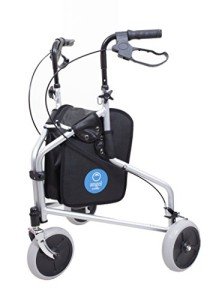
Lightweight Walker
Add a review FollowOverview
-
Founded Date June 12, 1924
-
Sectors Construction / Facilities
-
Posted Jobs 0
-
Viewed 26
Company Description
Ten Ways To Build Your Seat Walker Empire
The Seat Walker: A Comprehensive Guide to Mobility Aids
When it pertains to maintaining independence and mobility, people with limited mobility or impairments frequently rely on various assistive devices. One such gadget that progressively concerns the leading edge of mobility aids is the seat walker. This article supplies an in-depth appearance at seat walkers– their features, benefits, types, and the aspects to think about when picking one.
What is a Seat Walker?
A seat walker is a flexible mobility aid created mostly for individuals who may have problem walking unaided. It typically features a frame with wheels, manages for support, and a built-in bench or seat, permitting users to take breaks when required. Unlike standard walkers or rollators, which just offer support for walking, the inclusion of a seat makes the seat walker substantially more practical for many users.

Secret Features of Seat Walkers
- Wheels: Most seat walkers are equipped with front wheels that improve mobility and ease of use, allowing users to glide efficiently over different surfaces.
- Seat or Bench: The most distinguishing feature is the integrated seat, which uses a resting place for users when tiredness sets in.
- Deals with: Adjustable manages cater to different user heights, supplying sufficient assistance and making sure a comfortable grip.
- Brakes: Safety brakes prevent the walker from rolling away when someone is seated, enhancing user security.
- Lightweight Frame: Many designs are designed to be lightweight, making them much easier to carry and maneuver.
Benefits of Using a Seat Walker
Seat walkers have various benefits that make them an ideal option for lots of users.
- Enhanced Mobility: They provide greater stability and assistance than conventional walkers, lowering the danger of falls.
- Convenience: The ability to rest at any point makes them suitable for those who tire easily or have actually limited endurance.
- Self-reliance: Seat walkers enable users to preserve a degree of independence by allowing them to walk and rest without support.
- Flexibility: Suitable for both indoor and outdoor use, these walkers can adjust to various environments.
- Exercise: Regular use encourages exercise and social interaction, which can improve general wellness.
Types of Seat Walkers
Various types of seat walkers accommodate the varying requirements of users. Here is a breakdown of the most typical types:
| Type | Functions | Best For |
|---|---|---|
| Fundamental Seat Walker | Easy style, typically with a lightweight frame and minimal functions. | Users needing standard mobility support. |
| Sturdy Seat Walker | Enhanced frame, higher weight capacity, often with bigger seats. | People requiring more robust support. |
| Rollator For Disabled with Seat | Integrates seats with multi-height adjustable deals with and better maneuverability. | Users requiring regular resting choices. |
| Carry Seat Walker | Created for simple transport; typically folds and has a little footprint. | Active users who travel regularly. |
Selecting the Right Seat Walker
Selecting a seat Foldable Walker involves several factors to consider to guarantee it satisfies the user’s specific needs. Here are vital elements to bear in mind:
- Weight Capacity: Ensure that the seat walker can support the user’s weight conveniently.
- Seat Height: Check the height of the seat to ensure it is suitable and comfortable for the user.
- Width: Consider your home and guarantee the walker can fit through doors and narrow passages.
- Wheel Size: Larger wheels can deal with rougher surface, while smaller wheels are better suited for indoor use.
- Weight of the Walker: A lightweight Drive Medical Nitro 4-Wheel Walker in Red is advantageous for simple maneuverability and transport.
- Brakes and Safety Features: Look for dependable brakes and safety assurances, such as stability and anti-tip functions.
Setting a Budget
Seat walkers vary substantially in rate depending on their features and develop quality. While it’s necessary to find a model that fulfills the user’s requirements, it’s similarly crucial to set a reasonable spending plan.
Average Price Ranges:
- Basic Models: ₤ 50 to ₤ 150
- Rollators with Added Features: ₤ 150 to ₤ 300
- Heavy-Duty Models: ₤ 300 and up
FAQs About Seat Walkers
Q1: Who must use a seat walker?A1: Seat walkers are perfect for individuals with minimal mobility due to age, injury, or persistent conditions who require additional support while walking. Q2: Are seat walkers safe?A2: Yes, seat walkers are created with safety in mind. They normally include brakes, sturdy frames, and slip-resistant grips. Q3: How do I keep My Mobility Scooters seat walker?A3: Regularly examine the brakes and wheels for wear and tear.
Tidy the frame with a wet fabric and ensure
screws and elements are tight. Q4: Can seat walkers be utilized outdoors?A4: Yes, many seat walkers are designed for both indoor and outdoor use, though designs with larger wheels carry out better on uneven surfaces. Q5: How do I know
which seat walker is ideal for me?A5: Consult with a doctor or physical therapist who can assess your mobility needs and suggest ideal options based upon your special situation. The benefit and adaptability of seat walkers make them a vital tool for those with mobility challenges. By providing assistance, stability, and an opportunity for rest, they empower users to stay active and independent. When selecting a seat walker, individuals need to consider their personal needs, way of life, and safety to discover the very best match for them. With the ideal seat walker, lots of users can delight in a renewed sense of freedom, enhancing their quality of life and keeping their independence. In summary, whether one is navigating through the home, running errands, or delighting in fresh air in a park, a seat walker can prove to be an important buddy, changing daily activities into manageable tasks.


